Curwood Castle


Curwood Castle Exterior
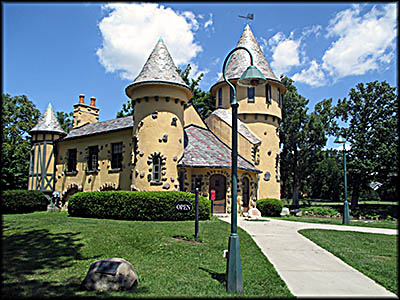
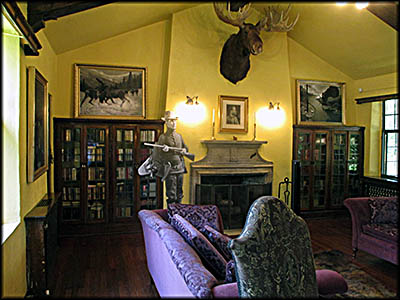
Curwood Castle's Main Floor
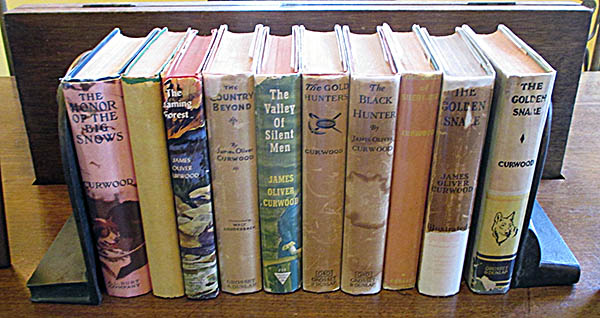
Here are some of James Curwood's novels.

James Curwood's Writing Desk
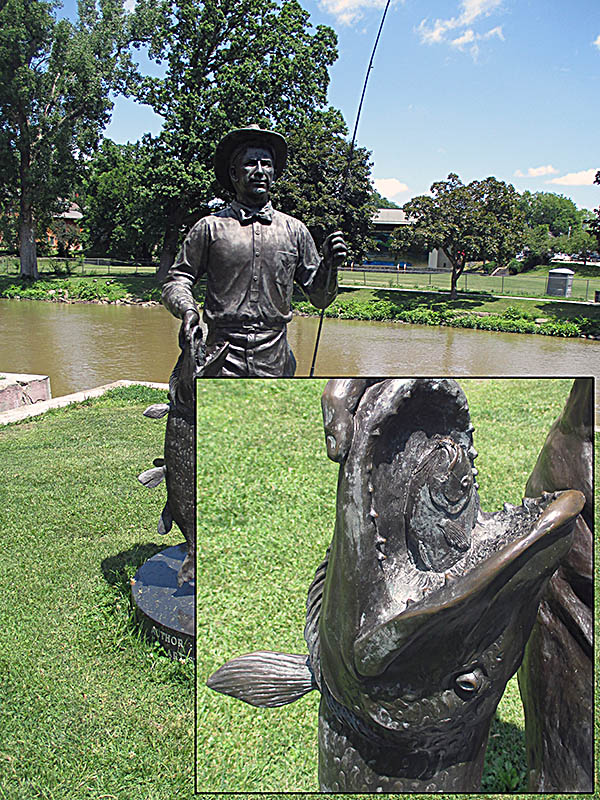
James Curwood Statue
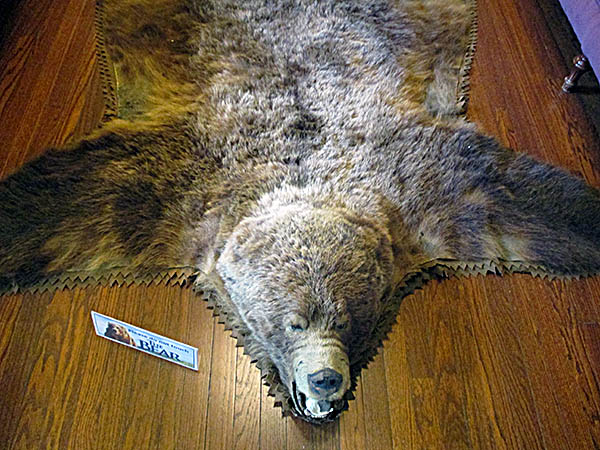
Bear Rug

Inside the Main Turret

A retired Curwood Castle sign.
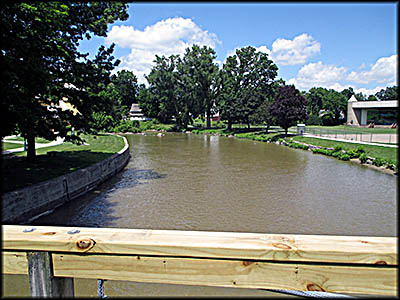
Shiawassee River
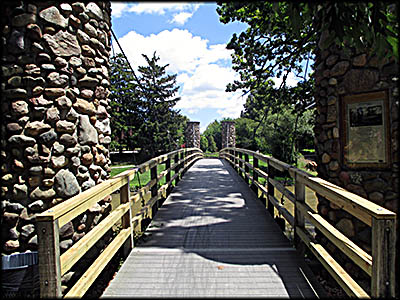
Nearby footbridge that crosses the Shiawassee River.
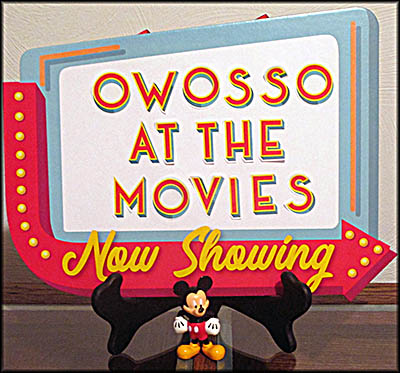
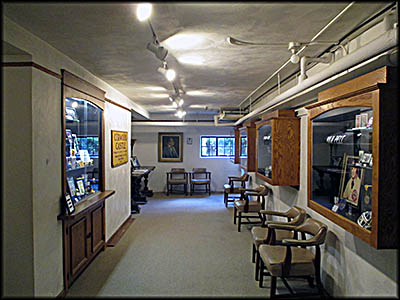
Curwood Castle Lowest Floor
This points to information sign about the movie Nikki, Wild Dog of the North, which was based on James Curwoods' novel Nomads of the North.
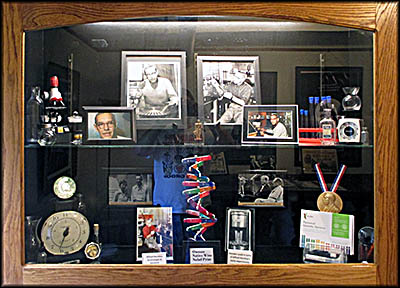
Alfred Day Hershey Display
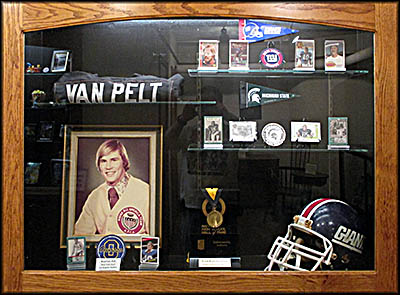
Brad Van Pelt, an Owosso native, was a linebacker for the New York Giants for fourteen seasons.
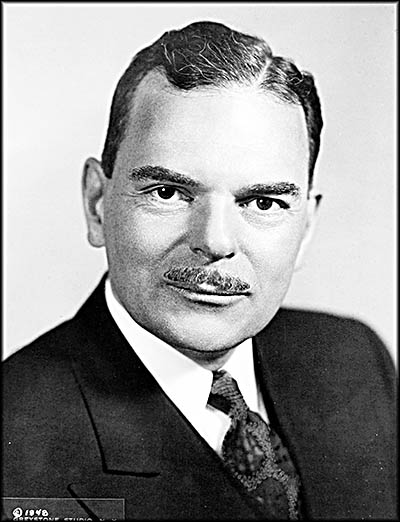
Thomas Dewey
Library of Congress
Library of Congress
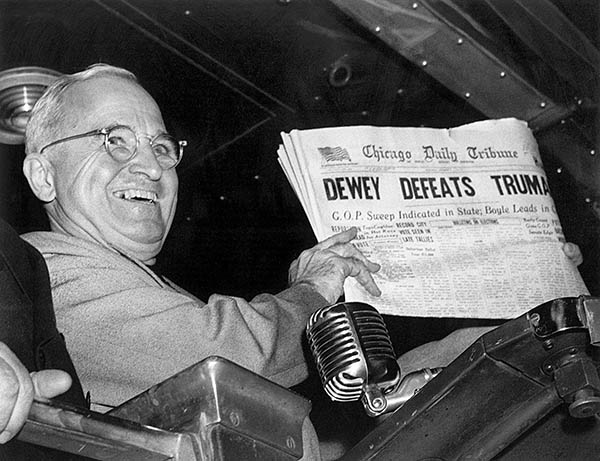
Famous photo of President Harry Truman holding a copy of the Chicago Daily Tribune after he won reelection.
Wikimedia Commons
Wikimedia Commons
It’s hard to say why some bestselling authors are forgotten after their deaths and others aren’t. Let’s take James Oliver Curwood. Up until his passing on August 13, 1927, he sold millions of books and countless of them were made into movies, the last of which, The Bear, came out in 1988. Today few of his books are in print, although Kindle editions are available at very low prices . He primarily wrote well-crafted adventure stories in a style and tone similar to Louis L’Amour, whose books are still in print.
So successful was Curwood that in hometown of Owosso, Michigan, he built Curwood Castle to serve as his writing studio. Now a museum with one of the most uninformative websites I’ve ever seen, it’s run by the Owosso Historical Commission, which does have useful information on its website about it such as its hours. I love visiting castles, and that’s why I picked this place. I must admit I’d never heard of James Curwood and had no idea where the castle’s name came from until I visited.
Curwood has an interesting connection to me in a six-degrees-of-separation sort of way. On December 12, 1862, his parents—James Moran Curwood and Abigail Griffin—got married in my hometown of Norwalk, Ohio. James, Sr., was a cobbler whose uncle, Frederick Marryat, was an officer in the Royal Navy who also wrote novels. Family lore had it that Abigail was descended from a Mohawk princess, a fanciful bit of nonsense. Mohawks didn’t have royalty and the appellation “princess” was applied by Europeans.
So successful was Curwood that in hometown of Owosso, Michigan, he built Curwood Castle to serve as his writing studio. Now a museum with one of the most uninformative websites I’ve ever seen, it’s run by the Owosso Historical Commission, which does have useful information on its website about it such as its hours. I love visiting castles, and that’s why I picked this place. I must admit I’d never heard of James Curwood and had no idea where the castle’s name came from until I visited.
Curwood has an interesting connection to me in a six-degrees-of-separation sort of way. On December 12, 1862, his parents—James Moran Curwood and Abigail Griffin—got married in my hometown of Norwalk, Ohio. James, Sr., was a cobbler whose uncle, Frederick Marryat, was an officer in the Royal Navy who also wrote novels. Family lore had it that Abigail was descended from a Mohawk princess, a fanciful bit of nonsense. Mohawks didn’t have royalty and the appellation “princess” was applied by Europeans.
Born on June 12, 1878, James, Jr. lived for first nine years of his life in Owosso. The failure of his father’s cobbler shop prompted him to move his family to a farm in Erie County, Ohio, which is next to Huron County of which Norwalk is the seat. It’s at this time James, Jr., began writing stories that he shared with his family. After seven years here, the family moved back to Owosso.
James, Jr., loved the outdoors and, as a result, found himself repeatedly expelled from school for too many absences, explaining why he didn’t graduate from high school. He nonetheless passed exams to get into the University of Michigan. He attended for two years, then departed to write for the Detroit News-Tribune. While working here, the twenty-one-year-old Curwood met sixteen-year-old Cora Leon Johnson and the two married on January 21, 1900. The first of their two children, Carlotta, arrived on February 7, 1903, and the second, Viola, was born on June 30, 1906. Realizing their marriage wasn’t working, they divorced in 1908.
During the marriage, Curwood wrote short stories to supplement his somewhat meager income. After the divorce, he started work on his first novel, The Courage of Captain Plum. He moved back to Owosso and had a house built for $3,500 as a duplex so he could rent out one-half in case his writing career didn’t work out. A tornado tore off the front porch in 1911, and in 1914 it was remodeled as a single family home. The house still stands at 508 West Williams Street and can be rented out via AirBnB. You can also tour it by appointment.
Curwood met his second wife, school teacher Ethel Greenwood, in 1908 at a church supper. On September 27, 1909, the two married in the house of Curwood’s parents at six in the morning because they needed to catch a 7 a.m. train to get to their honeymoon spot in Canada. Curwood had been there before when the Canadian government employed him to write about the county with the objective, says an information sign, “to promote tourism and immigration.” He’d fallen in love with its lands and people. He and Ethel headed deep into the Canadian wilderness and built a log cabin they called home for a year. The two lived off the land, hunting and fishing to supplement their food.
James, Jr., loved the outdoors and, as a result, found himself repeatedly expelled from school for too many absences, explaining why he didn’t graduate from high school. He nonetheless passed exams to get into the University of Michigan. He attended for two years, then departed to write for the Detroit News-Tribune. While working here, the twenty-one-year-old Curwood met sixteen-year-old Cora Leon Johnson and the two married on January 21, 1900. The first of their two children, Carlotta, arrived on February 7, 1903, and the second, Viola, was born on June 30, 1906. Realizing their marriage wasn’t working, they divorced in 1908.
During the marriage, Curwood wrote short stories to supplement his somewhat meager income. After the divorce, he started work on his first novel, The Courage of Captain Plum. He moved back to Owosso and had a house built for $3,500 as a duplex so he could rent out one-half in case his writing career didn’t work out. A tornado tore off the front porch in 1911, and in 1914 it was remodeled as a single family home. The house still stands at 508 West Williams Street and can be rented out via AirBnB. You can also tour it by appointment.
Curwood met his second wife, school teacher Ethel Greenwood, in 1908 at a church supper. On September 27, 1909, the two married in the house of Curwood’s parents at six in the morning because they needed to catch a 7 a.m. train to get to their honeymoon spot in Canada. Curwood had been there before when the Canadian government employed him to write about the county with the objective, says an information sign, “to promote tourism and immigration.” He’d fallen in love with its lands and people. He and Ethel headed deep into the Canadian wilderness and built a log cabin they called home for a year. The two lived off the land, hunting and fishing to supplement their food.
The first movie based on one of Curwood’s stories, Looking Forward, premiered on December 20, 1910. Realizing how lucrative Hollywood could be, he started his own production company, James Oliver Curwood Productions. He was the first writer to submit manuscripts directly the movie companies. Many well-known actors starred in films based on his stories including The Man from Hell’s River, which was the first film to feature Rin Tin Tin.
Long after Curwood’s death, other Hollywood studios continued to make movies based on his stories. Disney, as an example, turned Curwood’s novel Nomads of the North into the movie Nikki, Wild Dog of the North. Its main character, Nikki, is an Alaskan malamute dog. He and his master, Andre Dupas, find an orphaned black bear cub in the Canadian Rockies that they name Neewa. Separated from Andre, Nikki and Neewa work with each other to survive and in the process become good friends. When Neewa goes into hibernation, it leaves Nikki is on his own. He eventually finds Andre, and several years later the two see Neewa but leave him be because he’s happier roaming the wilderness.
Released in American theaters on July 12, 1961, Nikki did moderately well but hardly lit the box office on fire. In 1964, Disney reedited it as a two-part movie for its television series Wonderful World of Disney. Part one aired on September 27 and part two on October 4. No American studio today could make a movie like this because during the filming it put animals in life-threatening situations.
Long after Curwood’s death, other Hollywood studios continued to make movies based on his stories. Disney, as an example, turned Curwood’s novel Nomads of the North into the movie Nikki, Wild Dog of the North. Its main character, Nikki, is an Alaskan malamute dog. He and his master, Andre Dupas, find an orphaned black bear cub in the Canadian Rockies that they name Neewa. Separated from Andre, Nikki and Neewa work with each other to survive and in the process become good friends. When Neewa goes into hibernation, it leaves Nikki is on his own. He eventually finds Andre, and several years later the two see Neewa but leave him be because he’s happier roaming the wilderness.
Released in American theaters on July 12, 1961, Nikki did moderately well but hardly lit the box office on fire. In 1964, Disney reedited it as a two-part movie for its television series Wonderful World of Disney. Part one aired on September 27 and part two on October 4. No American studio today could make a movie like this because during the filming it put animals in life-threatening situations.
In 1914 Curwood’s book Kazan, a novel about a wolf-dog hybrid told from the animal’s perspective, sold over 500,000 copies. It’s at this time Curwood decided to build himself a writing studio that became known as Curwood Castle. Neither he nor anyone else ever used it as a residence. Built on land beside his mother’s house that he purchased from her for $1 and “considerations,” construction began in 1922 and was finished the next year. It cost of about $20,000. Curwood set up an office in the main turret and wrote the remainder of his novels here.
In 1914 while on a hunting trip, a bear had an opportunity to kill him but declined to do so. From this time forward, Curwood opposed hunting animals for trophies, although he wasn’t against killing them for food. A fierce conservationist, he was appointed a member of the Michigan Conservation Commission on January 1, 1927. He served on this until his untimely death at forty-nine later that year. It’s possible a spider bite caused his demise.
The castle stayed in the family until 1943 at which time it was to the city. The Owosso Board of Education used it as its headquarters in the 1950s and 1960s. It opened as a museum in 1970. On the lowest floor you’ll find exhibits about Owosso’s local history with a focus on people from the city who did something notable.
In 1914 while on a hunting trip, a bear had an opportunity to kill him but declined to do so. From this time forward, Curwood opposed hunting animals for trophies, although he wasn’t against killing them for food. A fierce conservationist, he was appointed a member of the Michigan Conservation Commission on January 1, 1927. He served on this until his untimely death at forty-nine later that year. It’s possible a spider bite caused his demise.
The castle stayed in the family until 1943 at which time it was to the city. The Owosso Board of Education used it as its headquarters in the 1950s and 1960s. It opened as a museum in 1970. On the lowest floor you’ll find exhibits about Owosso’s local history with a focus on people from the city who did something notable.
Most are them you won’t know by name. A good example is Alfred Day Hershey. Born in Owosso on December 4, 1908, he earned a Ph.D. in bacteriology in 1924 at Michigan State University. For many years he taught immunology and bacteriology at the Washington University School of Medicine in St. Louis, Michigan. In 1950, he a took a staff position in the genetics department at the Carnegie Institution of Washington in Cold Spring, New York. Here he and partner Martha Chase used a household blender, E. coli bacteria, a virus, and a smidge of radiation to prove that genes were made from DNA, not protein. For this he, Max Delbrück, and Salvador E. Luria won the 1969 Noble Prize in Physiology or Medicine. Chase not only didn’t receive the prize alongside Hershey, he didn’t bother to mention her name in his hours’ long speech.
Although Felix Schlag wasn’t born in Owosso, he spent many years living there. He began life on September 4, 1891, in Frankfurt, Germany, and spent his formative years there, even serving as a soldier during World War I. A sculptor by trade, he moved his family to America in 1929 to find better opportunities. New Deal programs gave him the chance to produce work for post offices and schools. Three big life changing events happened to him in 1938: he received his U.S. citizenship, his design for the Jefferson nickel won a contest for which he was awarded $1,000, and his wife died. One source says he used the prize money to pay for her funeral. Sometime after this, he decided to become a photographer and to that end opened a portrait studio in Owosso where he died in 1974. His nickel design, with some tweaks, is still being minted.
Although Felix Schlag wasn’t born in Owosso, he spent many years living there. He began life on September 4, 1891, in Frankfurt, Germany, and spent his formative years there, even serving as a soldier during World War I. A sculptor by trade, he moved his family to America in 1929 to find better opportunities. New Deal programs gave him the chance to produce work for post offices and schools. Three big life changing events happened to him in 1938: he received his U.S. citizenship, his design for the Jefferson nickel won a contest for which he was awarded $1,000, and his wife died. One source says he used the prize money to pay for her funeral. Sometime after this, he decided to become a photographer and to that end opened a portrait studio in Owosso where he died in 1974. His nickel design, with some tweaks, is still being minted.
Thomas Dewey was born in Owosso on March 24, 1902. His father was the editor of the Republican newspaper Owosso Times. Thomas became a lawyer and was a New York City and then state prosecutor who focused much of his energy going after organized crime. His reputation of making New York a safer place got him elected as governor, a post he held from 1943 to 1954. He had national ambitions and ran for president as the Republican candidate twice. The first try was against President Franklin Roosevelt in 1944. FDR won, but by the smallest margin of all his victories.
Dewey then ran against President Harry Truman in 1948, and this time all the pollsters and “conventional wisdom” held that Dewey would win. So sure of this was the Chicago Daily Tribune, it printed the headline “DEWEY DEFEATS TRUMAN.” Which by the next morning turned out not to be true. On March 21, 1971, Dewey played a round a golf Boston Red Socks player Carl Yastrzemski, then retired to his hotel with plans on attending the engagement party of Nixon’s daughter, Tricia, that evening. When he didn’t show, a friend went to the hotel and had the manager let him into Dewey’s room. They found his lifeless body lying on the bed.🕜
Dewey then ran against President Harry Truman in 1948, and this time all the pollsters and “conventional wisdom” held that Dewey would win. So sure of this was the Chicago Daily Tribune, it printed the headline “DEWEY DEFEATS TRUMAN.” Which by the next morning turned out not to be true. On March 21, 1971, Dewey played a round a golf Boston Red Socks player Carl Yastrzemski, then retired to his hotel with plans on attending the engagement party of Nixon’s daughter, Tricia, that evening. When he didn’t show, a friend went to the hotel and had the manager let him into Dewey’s room. They found his lifeless body lying on the bed.🕜
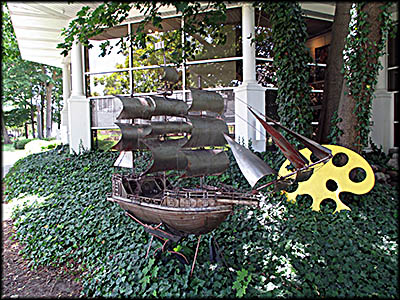
Beside Curwood Castle you will find the Shawassee Arts Center. You can see this sculpture outside the building on the side facing the Shawassee River.